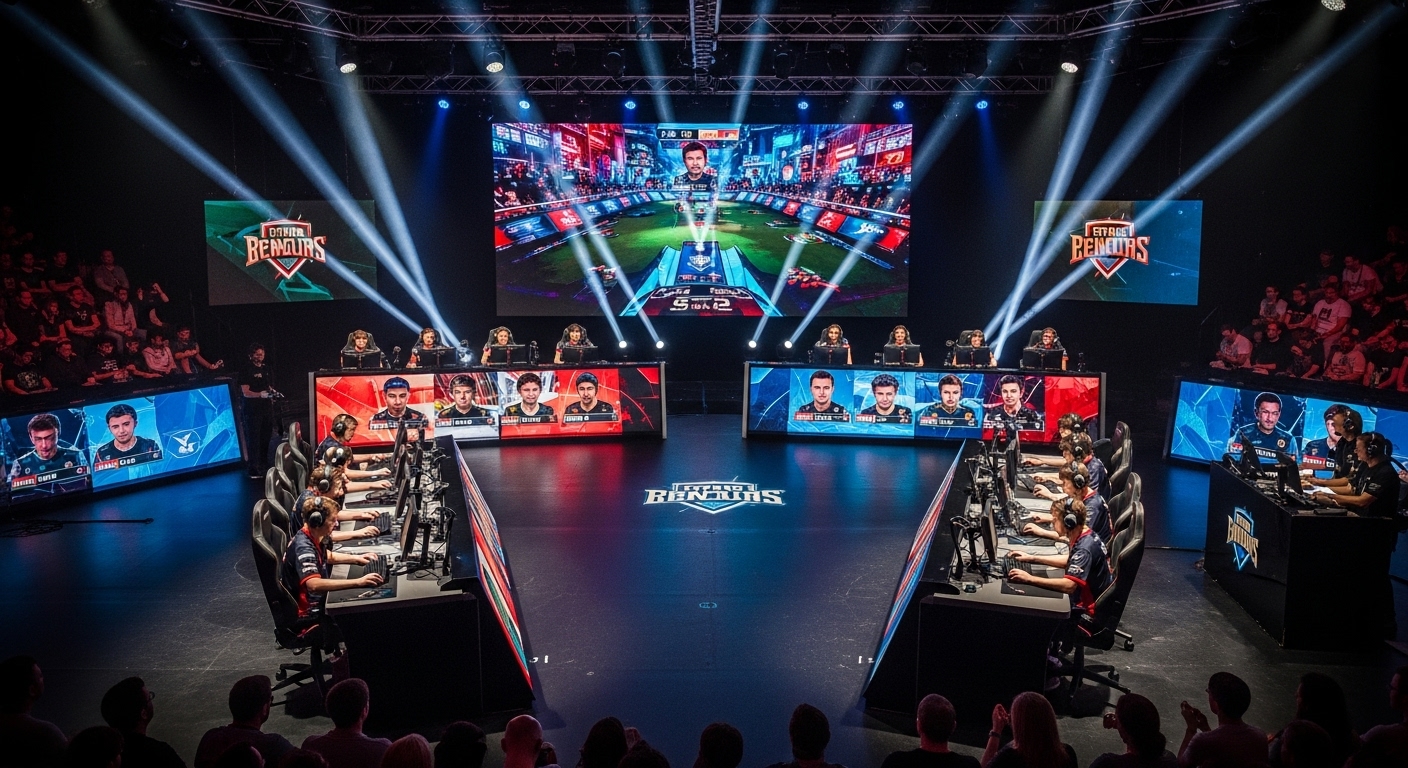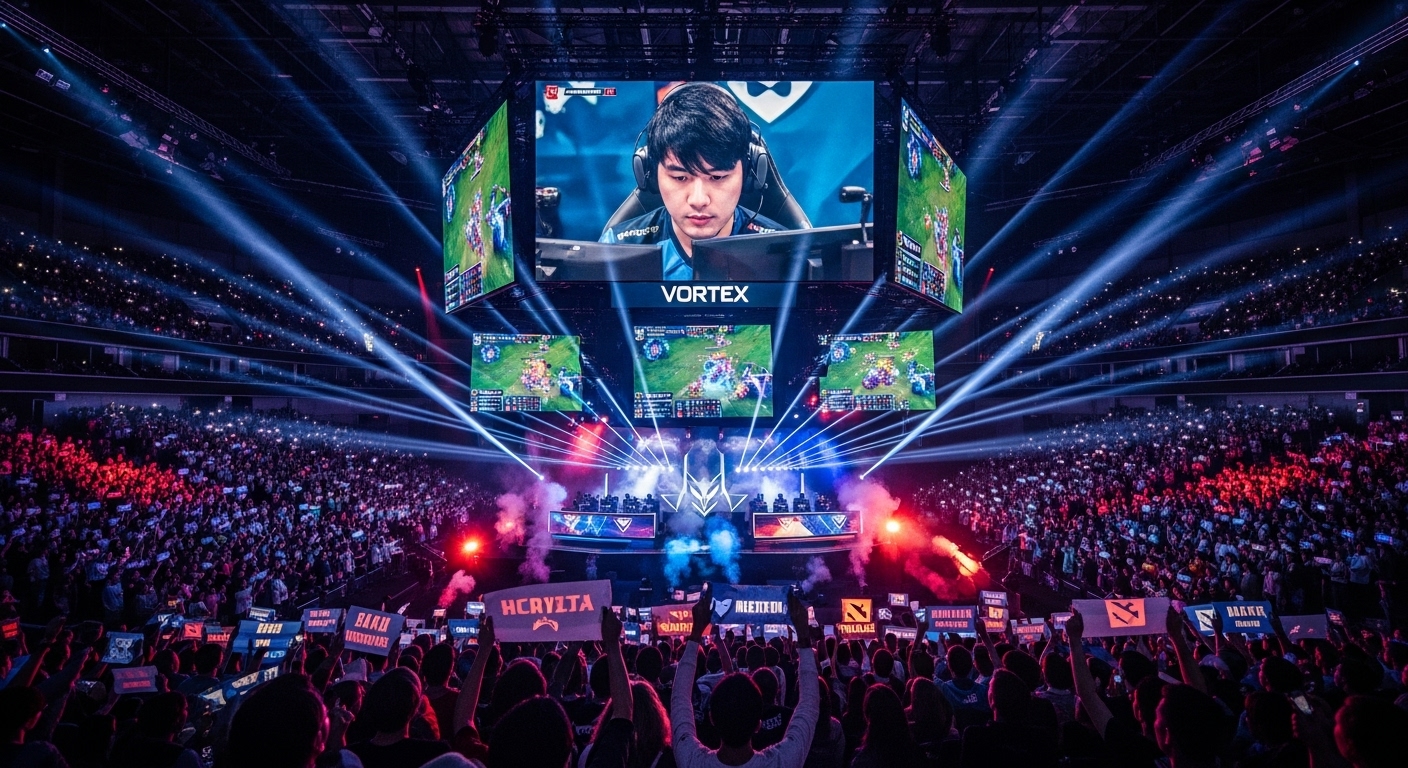Introduction to the World of Esports
In the past few decades, the world has witnessed a digital revolution that has reshaped how people connect, compete, and entertain themselves. Among the many outcomes of this transformation, one stands out as both a cultural and economic powerhouse: esports. Once regarded merely as a pastime for enthusiastic gamers, esports has evolved into a global industry worth billions of dollars. It represents not only competition but also passion, innovation, and a new form of community that transcends geographical boundaries.
Esports, short for electronic sports, involves competitive video gaming where individuals or teams play against each other in organized tournaments. The concept of esports has expanded far beyond the walls of gaming cafes and local competitions. Today, it attracts millions of viewers online and in massive arenas, with professional players earning fame and fortunes comparable to traditional athletes. This growing industry has redefined what it means to be an athlete, a fan, and even an entertainer.
The Origins of Esports
The journey of esports began modestly in the late 20th century. The first signs of organized gaming competition can be traced back to the 1970s, when computer enthusiasts gathered to play games like “Space Invaders” and “Pong.” These early competitions were small-scale events with little commercial attention. However, they planted the seeds for a cultural movement that would eventually bloom into a global industry.
The 1980s and 1990s saw significant progress as video games became more accessible to the public. The rise of arcade games and home consoles introduced millions to gaming. During this period, companies began to organize competitions to promote their games. Titles like “Street Fighter,” “Super Smash Bros.,” and “StarCraft” laid the foundation for competitive gaming.
The true transformation of esports began with the rise of the internet in the late 1990s and early 2000s. With online connectivity, players could compete with others across continents without ever leaving their homes. This connectivity allowed competitive gaming communities to flourish, with players organizing tournaments and streaming their matches for others to watch.
The Growth of Esports in the Modern Era
The 2010s marked the golden era for esports. Games such as “League of Legends,” “Dota 2,” “Counter-Strike: Global Offensive,” and “Overwatch” attracted massive audiences. Streaming platforms like Twitch and YouTube Gaming made it possible for millions of fans to watch live matches from anywhere in the world. Esports tournaments began to fill stadiums, with production quality rivaling that of major sports events.
Major global tournaments like “The International” (for Dota 2) and the “League of Legends World Championship” offered prize pools worth millions of dollars, drawing attention from sponsors, investors, and mainstream media. What was once seen as a niche hobby now became a professional career path for talented gamers.
Esports organizations began to emerge, recruiting players, coaches, analysts, and managers. These teams became brands in their own right, with fan followings and merchandise sales similar to football or basketball clubs. Universities started offering scholarships for esports athletes, while governments in several countries officially recognized esports as a legitimate sport.
Esports as a Professional Industry
The professionalization of esports has been one of its most remarkable achievements. Today, the industry operates much like traditional sports. Players train for hours every day, analyze gameplay strategies, and work with nutritionists and psychologists to enhance performance. Teams are supported by sponsors, broadcasters, and event organizers who ensure that tournaments run smoothly.
Career opportunities within esports extend beyond the players themselves. Commentators, analysts, content creators, coaches, and event planners all play essential roles in the esports ecosystem. Additionally, game developers work closely with esports organizations to design competitive features and balance gameplay to ensure fair competition.
The business model of esports is multifaceted. Revenue streams include sponsorship deals, advertising, merchandise sales, media rights, and ticket sales for live events. Streaming services have also become a major source of income, with platforms offering partnership programs and monetization options for professional gamers.
The Role of Technology in Esports Advancement
Technology has always been at the heart of esports. Advances in computer hardware, internet connectivity, and software development have made high-level competition possible. High-refresh-rate monitors, powerful graphics cards, and optimized gaming peripherals allow players to perform at peak levels.
Streaming technology has also been instrumental in bringing esports to a global audience. Real-time broadcasting platforms have allowed fans to interact with their favorite players, creating a sense of community and engagement that traditional sports sometimes lack. Artificial intelligence and data analytics are increasingly being used to improve gameplay strategies, predict outcomes, and enhance the viewing experience.
The introduction of virtual reality (VR) and augmented reality (AR) is also opening new possibilities for esports. These technologies promise to make gaming even more immersive, creating experiences where players can physically move within digital environments.
The Global Popularity of Esports
Esports is now a truly global phenomenon. Asia, particularly countries like South Korea, China, and Japan, has been at the forefront of esports development. South Korea, often called the birthplace of modern esports, has built a national culture around competitive gaming, with television networks broadcasting matches and players achieving celebrity status.
In North America and Europe, esports has also gained massive traction. Professional leagues and gaming houses have become part of mainstream culture. Esports arenas have been built in cities like Los Angeles, Shanghai, and Berlin, and major sports organizations have invested in esports teams.
Emerging regions such as the Middle East, Africa, and South America are now becoming important players in the global esports ecosystem. These regions boast young, tech-savvy populations eager to engage in competitive gaming. Governments and private organizations are investing in infrastructure to support local esports scenes.
The Cultural Impact of Esports
Esports has not only changed how people play games but also how they socialize and express themselves. It has given rise to a new form of digital culture where gamers connect, collaborate, and compete on a global scale. Streaming platforms have created influencers who inspire millions and shape gaming trends.
The esports community has also become a space for diversity and inclusion. While the industry has faced challenges regarding representation, it continues to evolve toward greater inclusivity. Players from different backgrounds, genders, and regions now compete on the same stages, fostering a sense of unity and global connection.
Esports has also influenced fashion, music, and entertainment. Collaborations between game developers and musicians are now common, and esports-inspired apparel has become a popular fashion trend.
The Educational and Cognitive Benefits of Esports
Beyond entertainment, esports provides significant educational and cognitive benefits. Studies have shown that playing competitive games improves strategic thinking, problem-solving, teamwork, and communication skills. Players must make split-second decisions, manage resources, and adapt to constantly changing scenarios—all valuable skills in real-world contexts.
Educational institutions are recognizing these benefits. Schools and universities now have esports clubs and courses that teach students about game design, management, and digital marketing. These programs not only support aspiring players but also prepare students for careers in the broader gaming industry.
Challenges Facing the Esports Industry
Despite its rapid growth, esports faces several challenges. One major issue is sustainability. The industry relies heavily on sponsorships and media rights, and maintaining profitability remains a concern for many organizations.
Player burnout is another issue. Professional gamers often face intense pressure and long training hours, leading to physical and mental health problems. There is a growing need for better support systems and welfare programs to protect players’ well-being.
Another challenge is ensuring fair play. Cheating, match-fixing, and performance-enhancing software threaten the integrity of esports. Regulatory bodies and game developers are constantly working to create stricter anti-cheating systems and enforce ethical standards.
Lastly, there are concerns about inclusivity and accessibility. While esports is global, not all regions have equal access to high-speed internet, gaming hardware, or competitive opportunities. Addressing these inequalities will be crucial for the industry’s future.
The Future of Esports
The future of esports looks bright. As technology continues to advance, the lines between traditional sports and digital competition will blur further. Virtual and augmented reality could revolutionize how people play and experience games. Artificial intelligence might become a training partner for professional gamers, helping them refine strategies and improve reflexes.
Esports is also expected to become a part of major sporting events. Discussions have already begun about including esports in international competitions. This integration could bring greater legitimacy to the industry and attract even broader audiences.
Moreover, the growing interest in mobile gaming has opened new opportunities. With smartphones becoming more powerful, mobile esports titles like “PUBG Mobile,” “Mobile Legends,” and “Free Fire” have expanded the player base, especially in regions where PCs or consoles are less common.
Esports and the Economy
The economic impact of esports is significant. The industry has created thousands of jobs across the globe, from game developers and broadcasters to marketing professionals and event organizers. The revenue generated through tournaments, sponsorships, and merchandise sales contributes to local and global economies.
Cities hosting major esports events experience tourism boosts, with fans traveling from around the world to attend tournaments. This economic ripple effect demonstrates the potential of esports as not just an entertainment industry but a driver of economic growth.
The Social Side of Esports
Esports has redefined social interaction in the digital age. Online communities have become central gathering places for fans to discuss games, share strategies, and support their favorite teams. These communities foster friendships that often extend beyond the virtual world.
Moreover, esports promotes teamwork and communication. Team-based games require coordination and trust among players, helping individuals develop social skills that are applicable in real life. Many players describe esports as a way to build confidence, find belonging, and express themselves creatively.
Women in Esports
The participation of women in esports has increased significantly over the years. Female gamers are breaking barriers, challenging stereotypes, and achieving success on professional stages. Organizations and initiatives are emerging to support women in gaming, providing equal opportunities and promoting inclusivity.
However, challenges remain. Issues such as gender bias and online harassment continue to affect female gamers. The industry is gradually addressing these problems through stronger community guidelines, awareness campaigns, and inclusive tournaments. The progress being made signals a more equitable and diverse future for esports.
Esports and Traditional Sports: A Comparison
While esports and traditional sports differ in format, they share many similarities in structure, competition, and fan engagement. Both require strategy, skill, discipline, and teamwork. The dedication of an esports player mirrors that of an athlete training for the Olympics.
Traditional sports organizations have recognized this connection. Many have established esports divisions or partnerships to engage younger audiences. For example, football clubs have launched teams in popular sports simulation games, merging physical and digital fan experiences.
Conclusion: The Power and Promise of Esports
Esports has grown from a small community of dedicated gamers into a global cultural phenomenon. It has transformed entertainment, technology, and even education, proving that digital competition can be as exciting and meaningful as traditional sports. The industry continues to expand, innovate, and inspire millions of people worldwide.
While challenges persist, the future of esports remains bright. It represents the spirit of innovation, competition, and community that defines the modern digital age. As technology evolves and society becomes more interconnected, esports will undoubtedly continue to play a vital role in shaping the future of global entertainment and culture.
In essence, esports is more than just gaming—it is a celebration of human creativity, skill, and the unyielding desire to compete and connect. It is a testament to how far technology and passion can take us when combined with imagination and determination.



